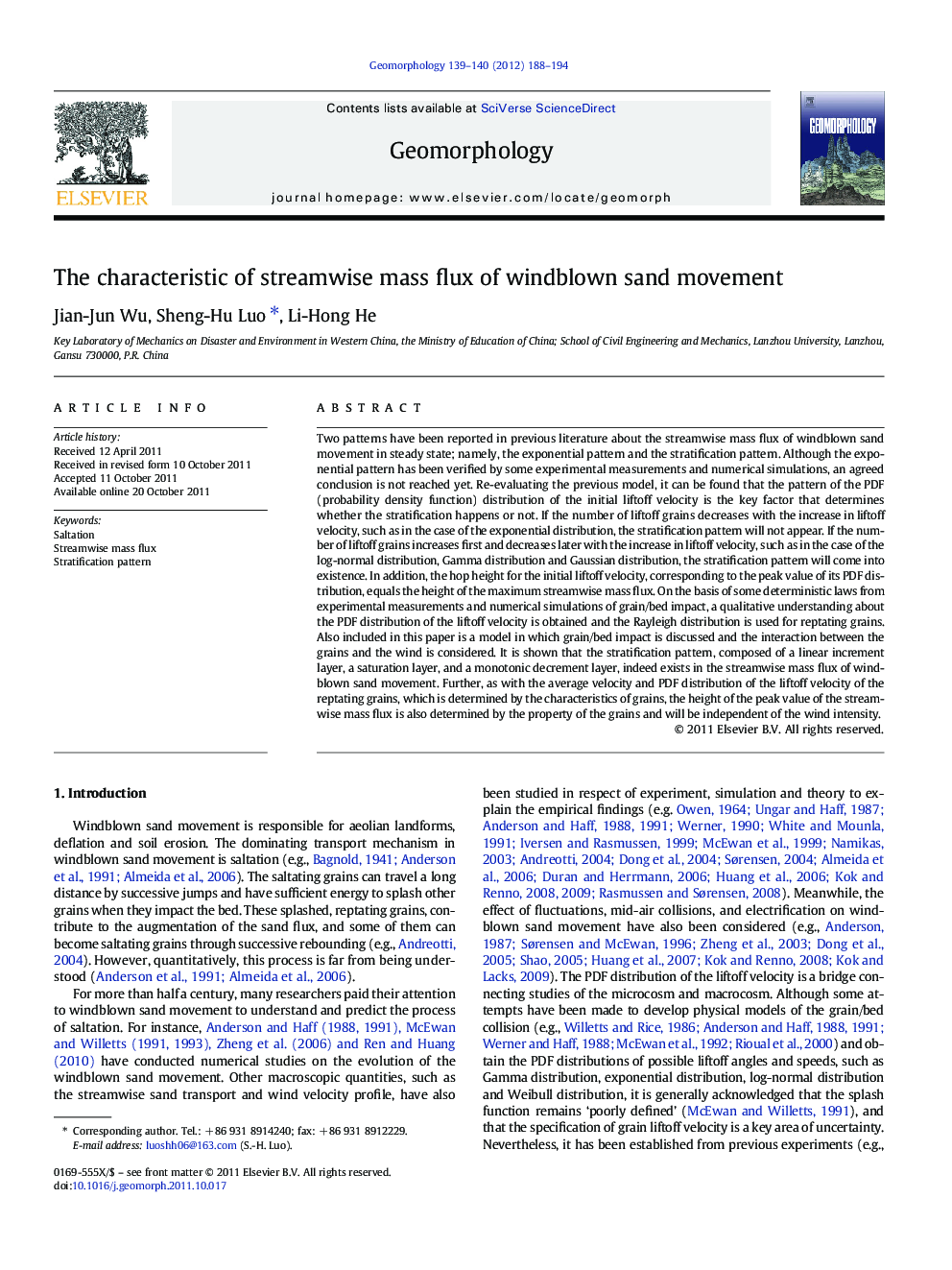| Article ID | Journal | Published Year | Pages | File Type |
|---|---|---|---|---|
| 4685305 | Geomorphology | 2012 | 7 Pages |
Two patterns have been reported in previous literature about the streamwise mass flux of windblown sand movement in steady state; namely, the exponential pattern and the stratification pattern. Although the exponential pattern has been verified by some experimental measurements and numerical simulations, an agreed conclusion is not reached yet. Re-evaluating the previous model, it can be found that the pattern of the PDF (probability density function) distribution of the initial liftoff velocity is the key factor that determines whether the stratification happens or not. If the number of liftoff grains decreases with the increase in liftoff velocity, such as in the case of the exponential distribution, the stratification pattern will not appear. If the number of liftoff grains increases first and decreases later with the increase in liftoff velocity, such as in the case of the log-normal distribution, Gamma distribution and Gaussian distribution, the stratification pattern will come into existence. In addition, the hop height for the initial liftoff velocity, corresponding to the peak value of its PDF distribution, equals the height of the maximum streamwise mass flux. On the basis of some deterministic laws from experimental measurements and numerical simulations of grain/bed impact, a qualitative understanding about the PDF distribution of the liftoff velocity is obtained and the Rayleigh distribution is used for reptating grains. Also included in this paper is a model in which grain/bed impact is discussed and the interaction between the grains and the wind is considered. It is shown that the stratification pattern, composed of a linear increment layer, a saturation layer, and a monotonic decrement layer, indeed exists in the streamwise mass flux of windblown sand movement. Further, as with the average velocity and PDF distribution of the liftoff velocity of the reptating grains, which is determined by the characteristics of grains, the height of the peak value of the streamwise mass flux is also determined by the property of the grains and will be independent of the wind intensity.
► The pattern of the streamwise mass flux is revalued. ► Grain’s velocity distribution determines the streamwise mass flux’s pattern. ► Rayleigh distribution is obtained and used in the model. ► The stratification pattern exists in the steady state. ► Grains determines the height of the peak value of the streamwise mass flux.
